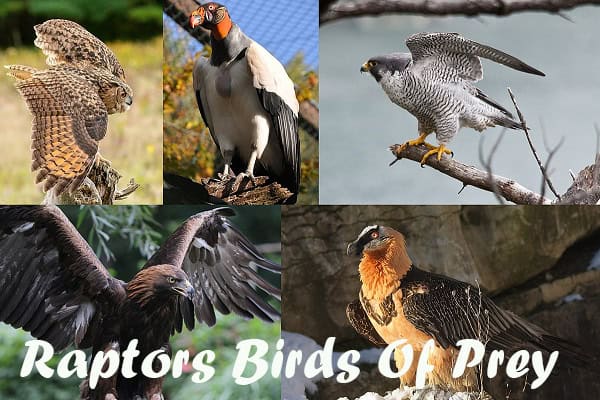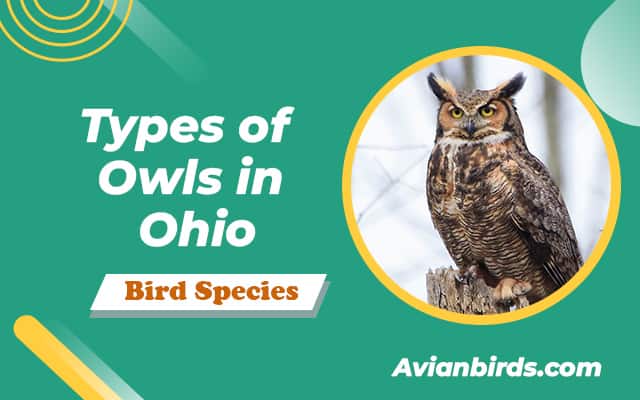7 Types of Small Birds with Long Tails (With Photos)
Did you know over 50% of all bird species have long tails? Small birds with long tails grab our attention like no other. They are not just beautiful but also play key roles in their ecosystems. They show amazing adaptations that help them survive.
In this article, we’ll explore the fascinating world of these avian wonders. We’ll look at their unique traits and the charm they add to bird photography.
Let’s dive into the enchanting beauty of small birds with long tails. We’ll see how their elegant tails help them survive and add to their charm. With stunning photos, we’ll bring these long-tailed birds to life. We hope to inspire all bird lovers to see their beauty.
What Makes Small Birds with Long Tails Unique
Small birds with long tails are special in the world of birds. They have unique traits like long tail feathers and bright colors. These features help them in many ways.
Their bright colors and patterns help them find a mate. In places where finding a partner is hard, these traits are key. The long tails also play a big part in how they show off to each other.
These birds have more than looks going for them. They also have complex social behaviors. These help them live in different places. We learn about their interesting ways by watching how they talk and work together.
| Adaptation Type | Description | Benefit |
|---|---|---|
| Tail Structure | Long, flowing feathers | Aid in-flight maneuverability |
| Coloration | Bright and varied colors | Attract mates and deter predators |
| Social Behavior | Complex vocalizations and interactions | Facilitate bonding and resource-finding |
Types of Small Birds with Long Tails
We explore the world of small birds with long tails. These birds have unique features and behaviors. We’ll look at three species that show the diversity of long-tailed birds.
1. Long-tailed Widowbird
- Scientific Name: Euplectes progne
- Size: 20–25 cm (7.9–9.8 in) in length, with males having tails up to 30 cm (11.8 in) long
- Weight: 40–50 g (1.4–1.8 oz)
- Lifespan: 3–5 years on average
- Diet: Seeds, insects, and grass
The Long-tailed Widowbird is known for its long tail feathers, over 20 inches long in the mating season. It lives mainly in sub-Saharan Africa. Birdwatchers love its striking look.
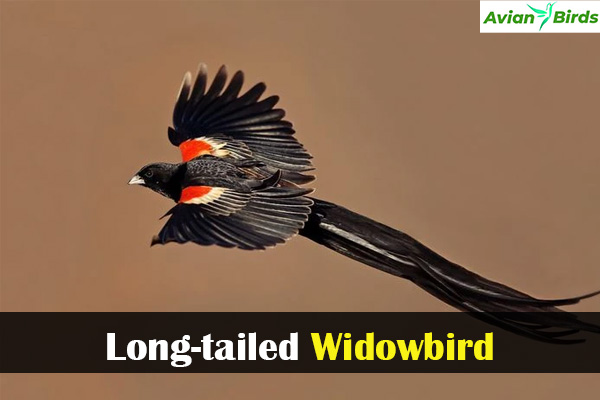
During courtship, males show off their tails to attract females. This bird lives in grasslands and is crucial to its ecosystem.
2. Ribbon-tailed Astrapia
- Scientific Name: Astrapia mayeri
- Size: 30–40 cm (11.8–15.7 in) in length, with males having long, ribbon-like tail feathers
- Weight: 200–300 g (7–10.6 oz)
- Lifespan: 5–10 years on average
- Diet: Fruits, nectar, and insects
The Ribbon-tailed Astrapia has males with tails up to three feet long. This makes it have one of the longest tails compared to its body size. It’s found in Papua New Guinea.
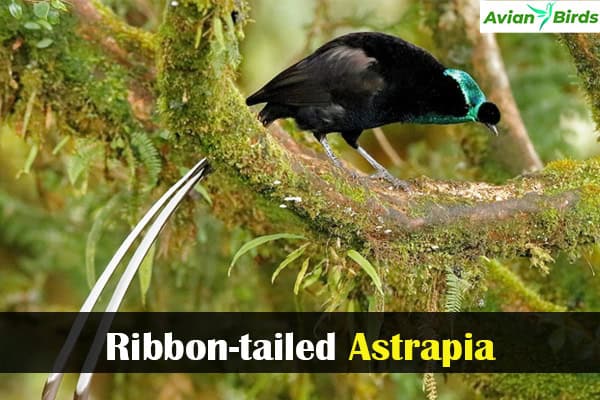
This bird is known for its bright colors and complex courtship behaviors. Its unique traits show how it has adapted over time.
3. Greater Bird-of-Paradise
- Scientific Name: Paradisaea apoda
- Size: 36–41 cm (14–16 in) in length
- Weight: 150–200 g (5.3–7.1 oz)
- Lifespan: 10–15 years on average
- Diet: Fruits, seeds, and insects
The Greater Bird-of-Paradise has thick yellow tail feathers. Males use these tails during courtship. This species lives in the Aru Islands and southwest New Guinea.
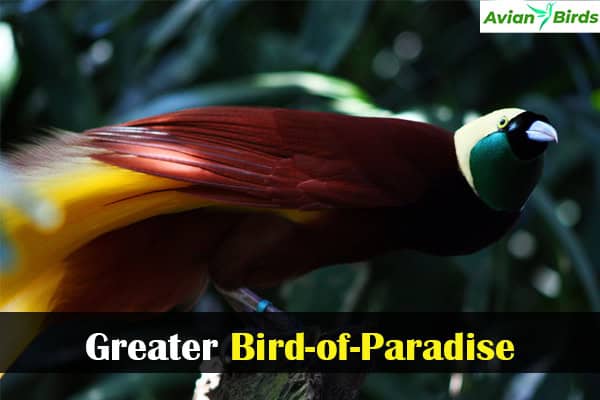
It plays a big part in its ecosystem. The bird’s mating rituals and role in its habitat are fascinating.
Characteristics of Long-Tailed Birds
Long-tailed birds catch our eye with their beautiful physical characteristics. They have bright colors that stand out, making them more charming in the wild. Males often have long tails that help them attract mates during breeding season.
These birds also have unique species behaviors that help them survive. They have amazing flight skills that let them move through tough environments. This skill helps them find food and avoid dangers.
Learning about these physical characteristics and behaviors helps us appreciate long-tailed birds more. We see how their traits are perfect for their homes, showing nature’s cleverness.
How Long Tails Help in Mating and Survival
Long tails in small birds are key to their mating and survival. These feathers help attract mates and improve flight. Let’s look at how these tails help in mating and survival.
The Role of Long Tails in Courtship Displays
Males with long tails show off to attract females. They use their vibrant tails to show they are healthy. Females pick males with the best tails, which helps in choosing strong partners.
This behavior boosts their mating chances and keeps strong genes going.
Long Tails and Flight Dynamics
Long tails make flying better for many small birds. They help with balance and agility in the air. This is key for avoiding predators and flying through tough places.
A study at the University of California found that keeping long tails doesn’t cost much energy. So, long tails help in mating and are also important for survival.
| Aspect | Benefits |
|---|---|
| Courtship Displays | Attracts females, highlights male health |
| Mating Strategies | Facilitates partner selection for stronger genetics |
| Flight Dynamics | Improves balance and agility, essential for evading predators |
| Survival Adaptations | Minimal metabolic cost, effective evolutionary strategy |
Discovering Small Bird Species in Our Environment
Many small birds with long tails live in our backyards and parks. Birdwatching lets us connect with nature and see these amazing birds. By looking for birds like the Scissor-tailed Flycatcher or the Taiwan Blue Magpie, we learn about the birds around us.
Watching birds in our yards helps us understand their lives better. We can make our yards better for birds by doing a few simple things:
- Provide suitable nesting materials to encourage breeding.
- Set up bird feeders stocked with seeds favored by specific local bird species.
- Create water features that offer hydration and bathing spots for birds.
- Plant native flora to provide natural food sources and shelter.
Adding these things to our yards makes them better for small birds with long tails. Seeing these birds makes birdwatching fun. By watching their behaviors, we feel closer to nature.
Linked Wildlife Conservation Efforts
Wildlife conservation is key to saving the homes of small birds with long tails. We see threats like habitat loss, climate change, and hunting harming these birds. It’s up to us to help protect them.
By joining local conservation efforts, we can make a big difference. Here are some ways we can help:
- Join bird-watching events to spread the word.
- Help out with organizations that protect wildlife.
- Support policies that protect nature.
- Choose sustainable products to lessen our impact.
Our actions can greatly improve the lives of these birds. By teaching others and working together, we can make a big change. We can help save the homes of these birds.
Let’s work together to protect these beautiful birds and their homes. Every small action helps a lot in the fight for wildlife conservation.
Check Our Previous Articles:
| Blue Bird With A Red or Orange Chest |
| White Birds in Hawaii |
| Doves in Illinois |
| Black Birds In Florida |
| Owls in Arkansas |
Conclusion
Small long-tailed birds capture the hearts of birdwatchers and nature lovers with their beauty. They show us the amazing diversity in the bird world. Their unique looks and skills highlight the beauty of birds in our world.
By watching these birds, we learn more about wildlife and appreciate nature more. This helps us understand and value the world around us.
These birds also remind us why we need to protect them. We must spread the word and help protect them for the future. This is key to keeping our natural world healthy, so we can see these birds flying and showing off their beautiful tails.



